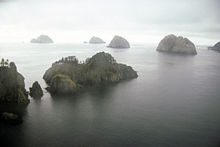A



- Aagumchiidalix
- Aagyuuĝim Nuĝa
- Aalikam Tangii
- Aalus
- Aaron Island
- Abalone Island
- Abbess Island
- Abraham Islands
- Abraham Islet
- Abrejo Rocks
- Acorn Rock
- Adak Island
- Adams Island
- Admiralty Island
- Adugak Island
- Afognak Island
- Agaiak Island
- Agatax
- Agattu Island
- Aghik Island
- Aghiyuk Island
- Agligadak Island
- Aguchik Island
- Aguliak Island
- Aguligik Island
- Agusux
- Agux
- Ahnowiksat Rocks
- Aiaktalik Island
- Aikens Rock
- Aiktak Island
- Akhiok Island
- Akuchin Rocks
- Akun Island
- Akusha Island
- Akutan Island
- Alaid Island
- Alargate Rocks
- Alaska Island
- Alax Hatam-tanasuu
- Alberto Islands
- Aleks Rock
- Aleutian Islands
- Aleutika Island
- Aleutski Island
- Alexander Archipelago
- Alexander Island
- Alf Island
- Alice Island
- Aliksemit Island
- Alim-tanakix
- Alixtax
- Alligator Island
- Alma Island
- Almguist Rock
- Althorp Rock
- Amagat Island
- Amak Island
- Amaknak Island
- Amatignak Island
- Amchitka Island
- Amee Island
- Amelius Island
- Amgasis
- Amik Island
- Amlia Island
- Ammunition Island
- Amook Island
- Amtagis Islands
- Amugam-tangingin
- Amukta Island
- Anachlik Island
- Anagaksik Island
- Anamxix
- Anangula Island
- Ananiuliak Island
- Anchor Island
- Andersen Island
- Anderson
- Andreanof Islands
- Andrew Island
- Andronica Island
- Anglamax
- Anguilla Island
- Anguk Island
- Angusxus
- Anguvik Island
- Angyam-tanasuu
- Aniktun Island
- Animas Island
- Annette Island
- Anowik Island
- Ansley Island
- Anthony Island
- Antones Island
- Anyaka Island
- Apple Islands
- Applegate Island
- Applegate Rock
- Arboles Island
- Arbor Island
- Arcada Rock
- Arch Rock
- Arctic Island
- Ardiguen
- Arey Island
- Argo Island
- Argonne Island
- Arguello Island
- Ariadne Island
- Arnkil Island
- Arrecife Islands
- Arthur Island
- Arwirnuk Rock
- Ashiiak Island
- Aston Island
- Asuksak Island
- Asuzudam Tanasuu
- Asxanung Hachan-tanangis
- Ataku Island
- Atangax
- Atka Island
- Atkins Island
- Atkulik Island
- Atniliak Island
- Atsakirak Mound
- Attu Island
- Augustine Island
- Avatanak Island
- Avogon Island
- Avon Island
- Axel Lind Island
- Ayakulik Island
- Ayugasxis
- Ayuxas
- Aziak Island




































